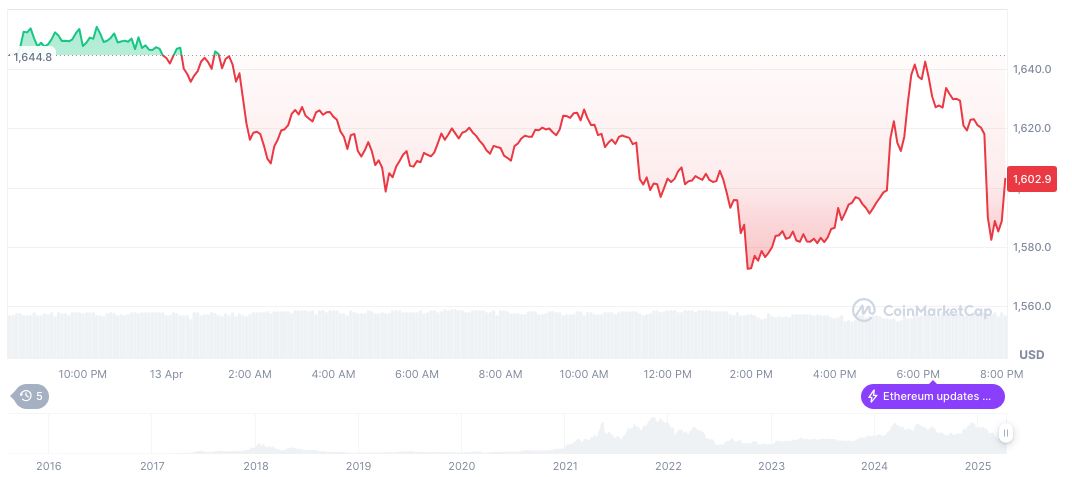 CaryptosHeadlines Media Has Launched Its Native Token CHT.
Airdrop Is Live For Everyone, Claim Instant 5000 CHT Tokens Worth Of $50 USDT.
Join the Airdrop at the official website,
CryptosHeadlinesToken.com
CaryptosHeadlines Media Has Launched Its Native Token CHT.
Airdrop Is Live For Everyone, Claim Instant 5000 CHT Tokens Worth Of $50 USDT.
Join the Airdrop at the official website,
CryptosHeadlinesToken.com
- Significant liquidation by Ethereum whale reduces holdings and impacts market dynamics.
- Whale sold nearly 65,000 ETH, reducing leverage risks.
- Ethereum market price sees potential stability post-liquidation.
Ethereum whale liquidated almost 64,792 ETH, on-chain data shows. The large holder first sold 35,881 ETH at $1,562 on April 10, then sold 2,000 ETH at $1,575 shortly afterwards. Currently, 688 ETH remain.
The action underscores market effects when significant liquidations occur, often prompting concerns about leverage and systemic risk. Ethereum’s price volatility was minimally affected, suggesting potential market resilience.
Market Stability Hints at Resilient Ethereum Ecosystem
The ‘56,995 ETH Whale’ reduced its position to mitigate liquidation risks, successfully unwinding leveraged positions via Ethereum sales. On-chain analyst @ai_9684xtpa revealed the whale gradually liquidated a substantial amount of ETH at varied prices in attempts to avoid liquidation.
The whale’s actions may dampen short-term market pricing due to increased liquidity but appear to have minimal long-term impact on Ethereum’s systemic stability. This kind of strategic liquidation can stabilize one’s portfolio by decreasing volatile positions.
“The liquidation actions of the whale indicate significant unwinding of leveraged positions, potentially reducing systemic risk in the ecosystem.”
Historical Context, Price Data, and Expert Analysis
Did you know? Large-scale Ethereum liquidations historically align with bearish trends, impacting market stability. Examples include DeFi sector downturns during May 2021, posing challenges from leveraged positions.
Ethereum’s market trajectory reveals a $1,634.09 price and near $197.22 billion market cap, CoinMarketCap reports. Recent trends show a modest 1.55% rise over 24 hours, countering a broader 15.36% decline over 30 days.


Coincu suggests whale actions could prompt regulatory scrutiny around leverage use in crypto markets. With similar downturn precedents, industry stakeholders may need to balance leverage with stability to avoid wider financial ecosystem impacts.









